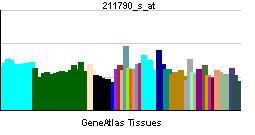Species Human Entrez 8085 | Human Mouse Ensembl ENSG00000167548 | |
 | ||
Aliases KMT2D, AAD10, ALR, CAGL114, KABUK1, KMS, MLL2, MLL4, TNRC21, lysine methyltransferase 2D External IDs MGI: 2682319 HomoloGene: 86893 GeneCards: KMT2D | ||
Histone-lysine N-methyltransferase 2D (KMT2D) previously known as myeloid/lymphoid or mixed-lineage leukemia protein 2 (MLL2) is an enzyme that in humans is encoded by the KMT2D gene. The gene is located on chromosome 12.This is a Trithorax-group protein.
Contents
Nomenclature
This gene is also generally known as MLL4 in the literature. This nomenclature has caused much confusion in the data bases. Originally MLL2 was used to describe the sister gene of MLL1, which is also a trithorax-group histone methyltransferase.
The MLL1 gene was originally named MLL after myeloid/lymphoid or mixed-lineage leukemia cases. Its closest homologue is a very similar gene (not the gene described here), which is also called MLL2, but sometimes unfortunately called MLL4. The gene described here as MLL2 should properly be called MLL4 because along with its closely related homologue MLL3, it is closely related to a different Drosophila homologue of trithorax. The material included below refers to the trithorax group protein that is associated with MLL3 and a protein complex, not containing menin but including PTIP. It is listed as MLL2 but it should properly be called MLL4. It is now understood that its effect in lymphomagenesis is via the disruption of chromatin regulation.
Clinical significance
Two thirds of a sample of 53 cases of Kabuki Syndrome have a loss-of-function mutation in the KMT2D gene.
Mutations of this gene are common in various types of B-cell lymphoma and are also associated with medulloblastoma and pheochromocytoma.
